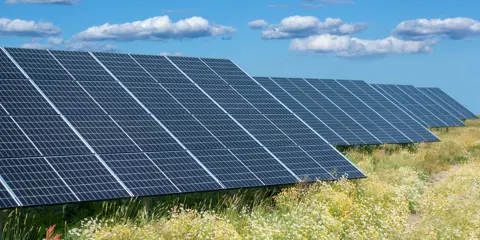At Saferoad, we believe that integrating solar modules into existing infrastructures presents an opportunity to create energy centers that not only enhance traffic safety but also contribute to the generation of renewable energy. With this innovative approach, we can utilize infrastructure for dual purposes while promoting efficiency and sustainability.
Solar energy at major intersections
Major intersections occupy a considerable amount of space to ensure the necessary room for ramps, safety clearances, snow storage, and more.
However, with simple adjustments during the planning phase, we can install solar installations in specific areas of these spaces without needing to develop additional open land.
Utilizing infrastructure at intersections
Intersections often serve as natural hubs for technical infrastructures, such as transformers for street lighting, service buildings, rest areas, as well as parking and charging facilities.
Solar systems can directly supply these facilities—either due to proximity to energy consumers or through physical storage solutions like battery systems and virtual storage to ensure street lighting functions safely during evening and nighttime hours.
Assessing suitability and potential
Not every intersection is equally suitable for solar installations. However, major highway interchanges, in particular, offer high potential for significant electricity generation and a good cost-benefit ratio.
Some of the biggest challenges include correctly positioning solar installations concerning safety clearances, snow storage, reflection risks, maintenance needs, and pollution from fine dust.
Potential for solar power at highway interchanges
The potential for solar power at highway interchanges is deemed enormous.
By utilizing these underused areas, we can increase energy generation while meeting safety and efficiency requirements.



